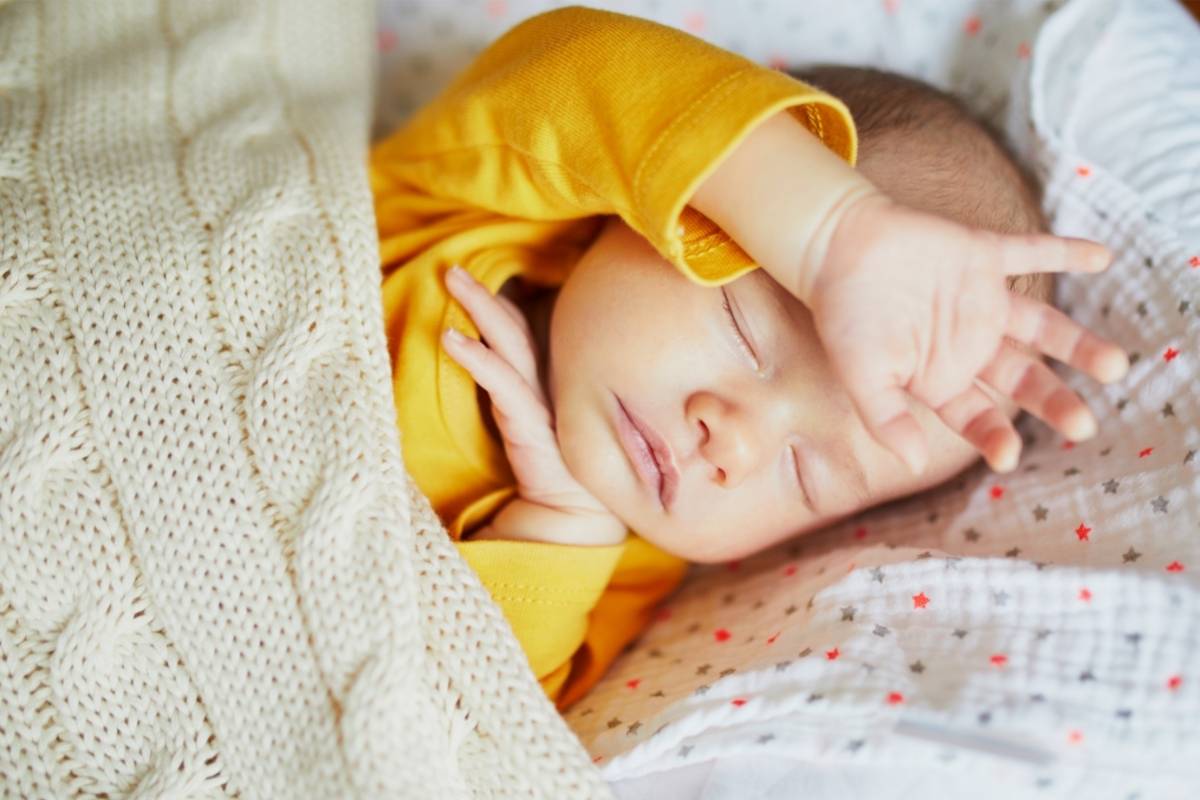Baby nests are one of the newer technological innovations that help with baby care. If you’ve seen pictures of a baby looking so comfortable in a baby nest, you’ll struggle to fight the urge to veg one for your baby. But are baby nests a worthwhile investment?
When it comes to baby nests, you should generally follow your guts. While they don’t meet most sleeping standards, there is no proof that they’re dangerous either. With most government agencies criticizing them, their viability is very seriously debated.
With many governmental agencies issuing warnings about baby nests, we’ll analyze just how safe they are. If you must use baby nests for your baby, you’ll learn how to select the best ones for your baby and how to use them safely.

What are Baby Nests?
Baby nests are nests, but for babies. They’re designed to have a slight curvature with raised edges to help babies sleep on their backs without the risk of turning over to their tummies, which is a significant concern for babies.
While baby nests are getting popular with mums, they don’t seem to augur well with doctors and major health organizations. As a result, many countries are releasing clear, unambiguous warnings against the use of baby nests to help babies sleep.
It’s clear that using baby nests carries some valid risks, but the severity of these risks and if they should prevent people from them remains unclear. So far, we haven’t come across any government that has effectively banned nests, signaling that they’re relatively important.
Are Baby Nests Safe?
Before getting any item for your baby, it’s important to review its safety. Judging by that criteria, baby nests don’t do well. While they may not be as dangerous as you think, you should also use them with caution.
Before examining some of the arguments against the safety of baby nests, it’s important to note that they’re still relatively new. They’ve only been around for a few years, and not much scientific research has gone into examining how safe they are for babies.
In 2018, The Lullaby Trust, a British nonprofit with the main goal of helping babies sleep more healthily, published a report regarding sleep pods and nests for babies. The report analyzed baby nests and decided that it doesn’t meet their safe sleeping standards for babies.
Their safe sleeping standards require the sleeping surface for babies to be firm and completely flat. Upon examining baby nests, it’s clear that they don’t meet these requirements. However, is it certain that a surface that is neither flat nor firm is always bad for babies?
The question of the safety of baby nests is still open to some deliberation. Up until today, there haven’t been any standard laboratory tests or massive-scale studies.
Until one is available, it’s best to simply follow your guts. Many mums have used baby nests successfully without any issues, and there is no valid reason why you should avoid getting one, at least right now. If future scientific research proves any problem with them, you can deem them unsafe, but that is even unlikely.
Should You Use Baby Nests to Sleep Overnight?
If your baby’s nests seemingly work fine, you may be tempted to use your baby’s sleeping nest as an overnight sleeping pod. But is this a good idea at all?
Before answering the question, I should emphasize that the safety of a baby nest isn’t guaranteed. While there is no proof that they can be dangerous, nobody knows if they’re also risky.
If you’re using a product without a clear safety label for your baby, it’s important to use it with caution and attentive supervision. Since sleeping nests fall largely into this category, it’s important to exercise caution whenever you use them.
If your baby is fast asleep in a baby nest, you shouldn’t keep your eyes away from them. This will make it easier to attend to them if any emergency occurs.
However, keeping an eye on someone when you’re fast asleep doesn’t seem like a possible feat for a human. For this reason, it’s generally recommended to avoid keeping your baby in their sleeping nests overnight. You can use their cribs during the night and a nest during the day. That way, you can rest assured that your baby is safe.
How to Choose the Best Baby Nest for Your Baby
Baby nests have a legitimate safety concern. If you’re choosing one for your baby, you must ensure your choosing a quality baby nest to avoid all the associated safety concerns. But how do you recognize a quality baby nest?
Here are some factors to consider when choosing a baby nest to maximize comfort and safety.
- Firmness
While the basic design of baby nests makes their surface a bit too soft to meet most safe sleeping standards for babies, you should try as much as you can to get a relatively firm surface.
There are many standards for testing mattresses for babies and you should only go for baby nests that have taken at least one of these tests.
In addition to testing for the firmness of the mattress on the baby nest, it’s also important to check for the presence of any materials that can either hurt the baby directly or present a choking hazard.
If the mattress on the baby nest is firm enough to be relatively safe for short naps, you’re good to go. Baby nests can’t compare with cribs that are specially designed to pass the requirements of the baby sleeping standards.
- Breathable fabric
Before paying for a baby nest or any other baby care products for that matter, it’s important to check if the fabric at the sides is breathable at least. The fabric is breathable if you can breathe through it comfortably when it’s clearly covering your nose.
Some baby nests don’t only have breathable fabrics to the sides, but they also feature a breathable mattress. These kinds make the best baby nests as they dramatically reduce the risks to your baby. You can check if the fabric is breathable by reading through the fine print. There are breathability tests that check the breathability of the fabric and issue a score.
If possible, try to always get a baby nest that has gone through and passed a breathability test.
- Portability and cleaning
The ease of cleaning of the baby nest you’re buying is a factor that benefits you directly, and not the baby. If it’s impossible to take the entire structure apart, cleaning will be much of a hassle. Imagine having to wash the entire nest without taking it apart.
While you should be able to take it apart for cleaning purposes, you should also confirm that it doesn’t have any small parts. As babies grow, they may put the objects around them in their mouths, and if there’s a part small enough to fit into their mouths, it could cause a choking hazard.
Also, the baby nest should be easy to fold and compress for ease of transportation. Since you’ll be taking it across rooms frequently and out of the home occasionally, you don’t want a structure that’s a hassle to carry. However, if the baby nest is relatively easy to clean, then it should also be portable.
- Must look nice
If you take a good look at all of your baby items, you’ll notice a similarity across all of them; they all look great. That is not a coincidence. Baby products are usually made with funky colors and cool designs to make them look enticing to babies, and baby nests shouldn’t be an exception.
You can decide to go with the existing color scheme across all of your baby products. You can also decide to change things up a bit by choosing very different colors from what already exist across the baby’s items.
You should note, however, that colors don’t say it all about design. They only make a part of the overall design language of the item. And also, you should generally prioritize the safety and portability features over a great design, but who says you can’t have it all?

